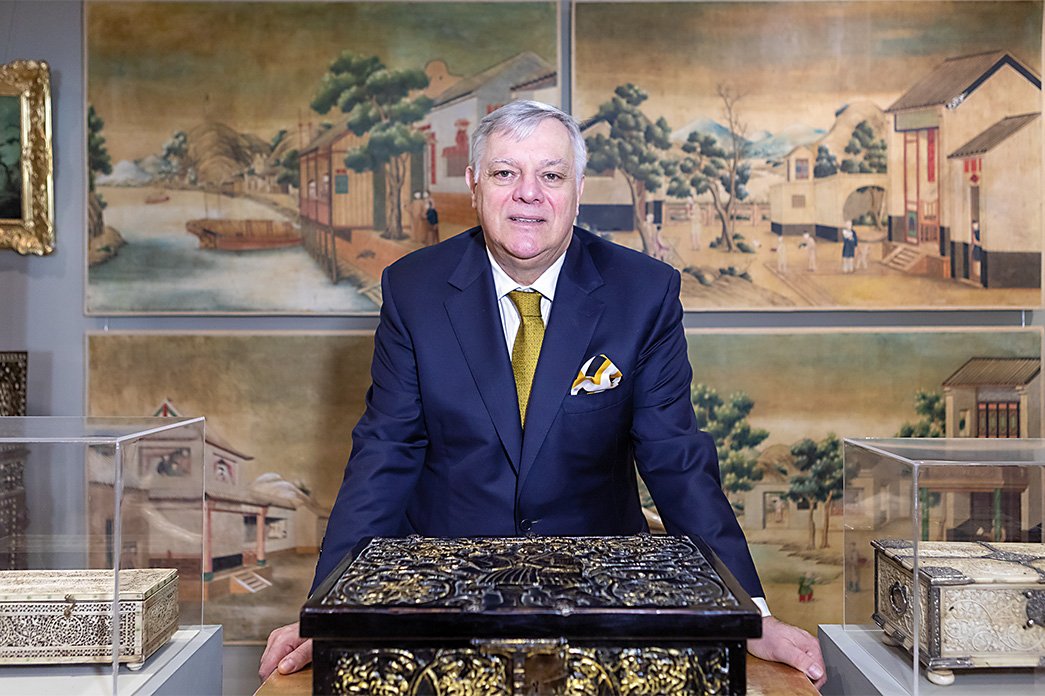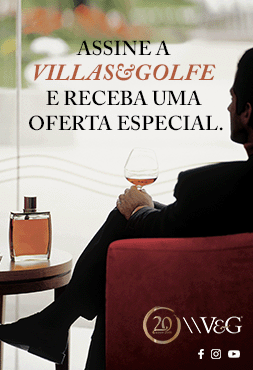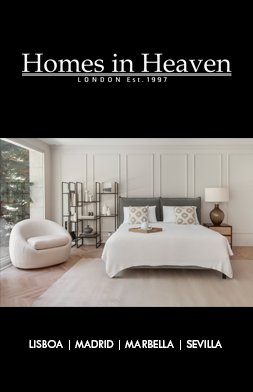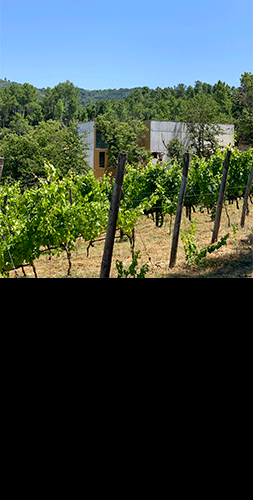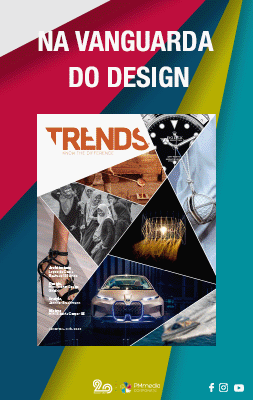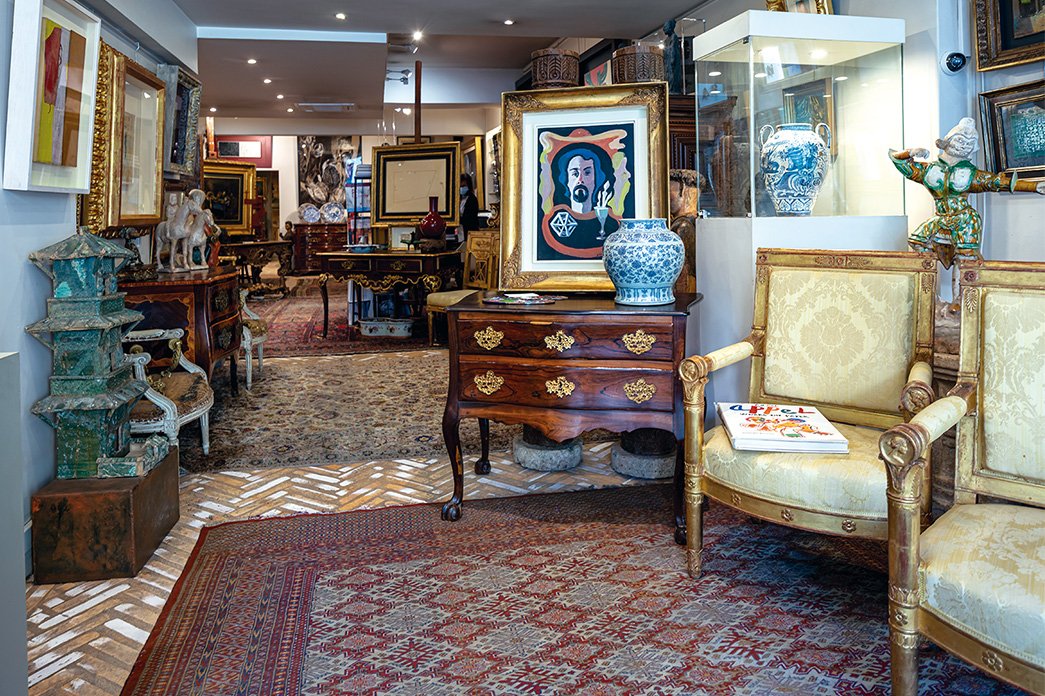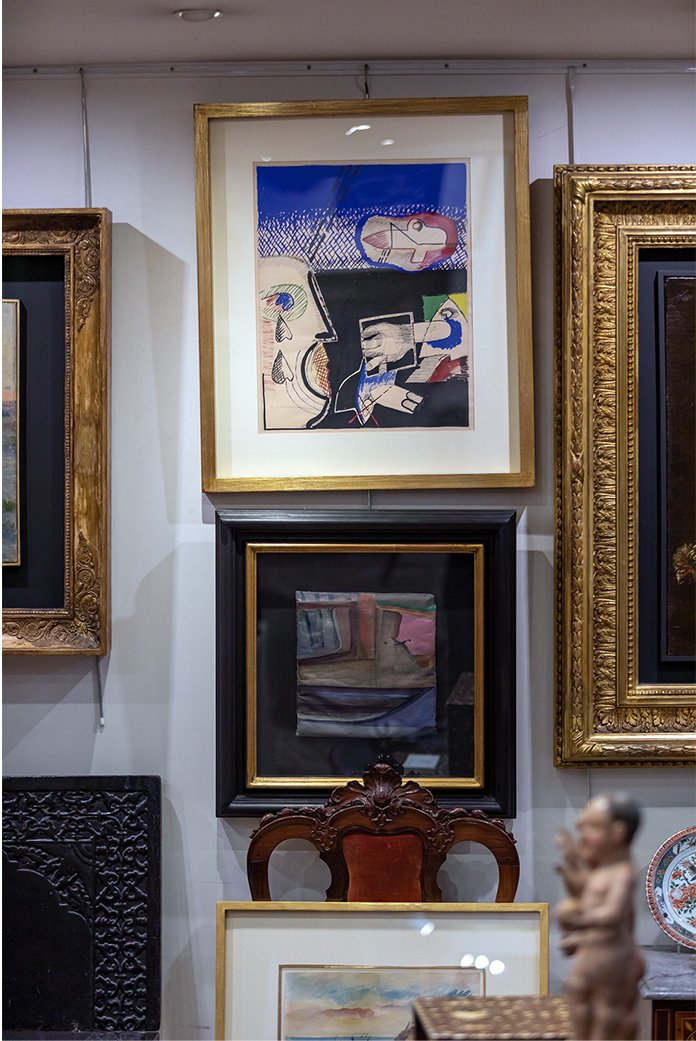And it was at the Paris Biennale, in 2018, that you also had a surprise.
Yes, that’s right. The best piece at the Paris Biennale, one of the most renowned antiques fairs in the world, was one of our pieces, a 16th-century Portuguese enamelled and gilded copper salver featuring the Portuguese royal coat of arms. The interest in this piece lies in the fact that, around the coat of arms of Don Sebastião, there are African motifs, making it the first in Europe that was produced uniting the two continents and where exoticism was revealed as art. It was also the first time that a Portuguese piece was awarded at a competition and we are all proud of it.
How did you come across this piece?
The piece had been with a collector for many years, who may have bought it in another antique shop and, by all accounts, this 16th-century salver was in the kitchen of the house. I should add that the success of this piece was so great that the directors of the Guimet Museum, on realising the importance of our faience in introducing the oriental in European art, which gave rise to the first chinoiseries, the following year asked me to lend several pieces for an exhibition on Ming porcelain of the Wanli period, with the purpose of showing the importance that Portuguese faience had in the development of this taste.
«Antique dealers give museums objects that enhance the collections on display»
When the shop was founded, back in the day, it managed to bring prestige to the name.
Ever since my mother opened the antique shop, in 1990, I’ve always been by her side, even though I work as a doctor. I couldn’t resist and joined two passions. As a result, I absorbed her knowledge and her great discipline. In 2007, I decided to open two spaces with António, thinking of a larger, more dynamic and multifaceted place. Times were indeed different, but my time in Brussels, for seven years, gave me a more international view of art and the art market. I knew that I had to promote a change in this market in Portugal, so that it would become less static, more competitive and professional, using the European model.
The gallery is also an exhibition space, and now features one on women in painting.
I don’t claim to be a gallerist in the true sense of the word. But I always had modern art that, even in my mother’s time, was present, so, and because I feel that some artists deserve more affection, I started to hold exhibitions open to the general public. And, in this respect, and after others that have already been held here, we have, until the end of July A Tribute to Women. Artists in the São Roque Collection, in which we will exhibit 91 pieces by 40 women painters, some better known than others, but all important, from Josefa d’Óbidos, to Vieira da Silva, Paula Rego, Graça Morais, and Maria Keil, among others. This is a simple tribute to these women, to whom the barriers imposed by social, political or cultural issues, prevented them not only from following the artistic path, but also from obtaining their true recognition in this field.
